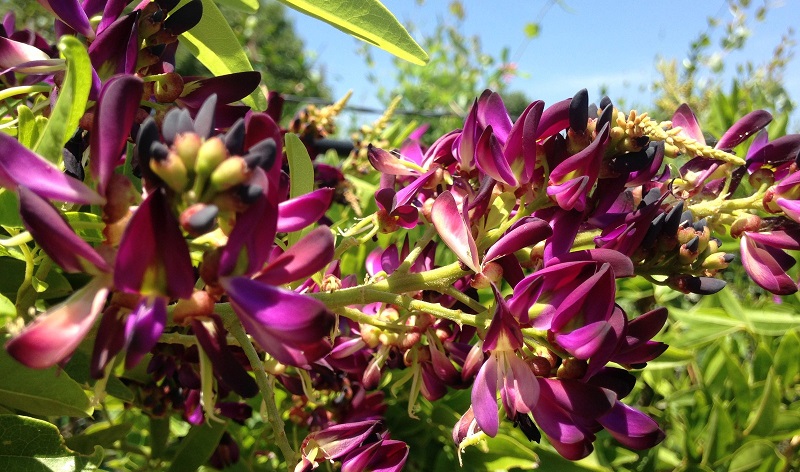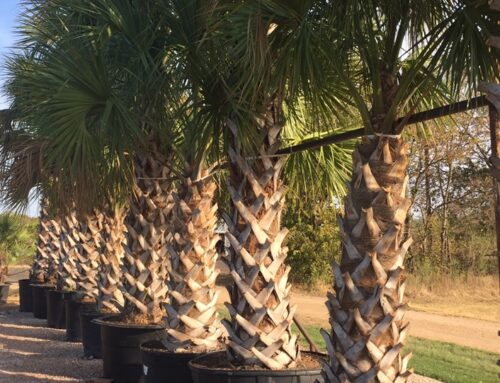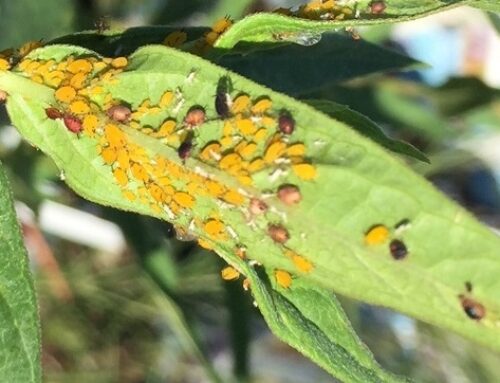Vines are used for many different purposes in the landscape. We might want to cover a fence to provide a screen, attract hummingbirds with a flowering vine, or just provide aesthetic appeal. Fortunately, we have a plethora of vines to choose from. Some things to consider before choosing a vine are its mature size, whether it requires sun or shade, if it is an annual or perennial, evergreen, deciduous, herbaceous, whether it climbs using tendrils, “holdfasts” by twining, and what attributes it can contribute to the landscape.
CLICK HERE for A Printable PDF Version
| Common Name | Scientific Name | Height | Exposure | Zone | Evergreen | Description |
| Hyacinth Bean Vine | Lablab purpurea | 10′-15′ | Sun | Z9 | No |
Twining vine with purple-pink flowers all summer. Collect seed to re-plant in spring. Pods are not edible. Annual. |
| Cypress Vine | Ipomoea quamoclit | 10′ + | Sun | Z10 | No |
Vigorous twining vine with red flowers in summer which attract hummingbirds and butterflies. Re-seeds readily in Zones 6-9 and may be invasive. Annual. |
| Annual Morning Glory Vine | Ipomoea sp. | 10′-15′ | Sun | Z10 | No |
Twining vines grow rapidly after sowing in spring. Attracts hummingbirds and butterflies. Readily self-seeds. Annual. |
| Lavender Lady’ Passion Flower vine | Passiflora ‘Lavender Lady’ | 20′ | Sun to Part Sun | Z9 | No |
Vigorous vine with 5″ purple flowers that bloom all summer. A sterile hybrid that does not produce fruit, and is an annual most years. Host plant for Gulf Fritillary Butterfly caterpillars. Attaches with tendrils. |
| Coral Vine (aka Queen’s Wreath) | Antigonon leptopus | 30′ + | Sun to Part Sun | Z8 | No |
Deilicate vine with heart-shaped leaves and bright pink clusters of flowers. It begins its greatest round of flowers with the late summer rains. Dies back to sweet-potato like tubers at first frost. Truly an old-fashioned plant with spectacular blooms. |
| Yellow Butterfly Vine | Mascagnia macroptera | 20′-30′ | Sun | Z8 | Yes/No |
One of the few vines that is actually reliably deer-resistant. Named for the seed pods shaped like butterflies, this twining vine boasts yellow clusters of flowers in the summer. Evergreen in mild winters, deciduous in severe winters. |
| Semi-Evergreen Wisteria | Milletia reticulata | 20+ | Sun to Part Sun | Z8 | Yes/No |
Vigorous twining vine with lightly fragrant reddish-purple clusters of flowers June-August. Not invasive like the “true” Wisteria. Evergreen in mild winters. |
| Amethyst Falls’ Wisteria | Wisteria frutescens ‘Amethyst Falls‘ | 8′-10′ up to 30′ | Sun to Part Sun | Z5 | No |
This twining vine grows at 1/3 the rate of the Asian Wisteria. Blooms are lightly fragrant purple racemes that appear in late spring. May re-bloom lightly in summer. |
| Tangerine Beauty’ Crossvine | Bignonia capreolata ‘Tangerine Beauty’ | 30′ | Sun to Part Sun | Z6 | Semi-Evergreen |
This self-clinging vine attaches to structures with tendrils. It boasts a long season of bloom beginning in late spring with a spectacular show of tangerine tubular blooms which attract hummingbirds. Scattered blooms throughout the summer. |
| Blue Caerulea Passion Flower Vine | Passiflora caerulea | 25′ | Sun to Part Sun | Z7 | Semi-Evergreen |
Vigorous vine with tendrils to attach to structures, its 4″ blue and white flowers have the scent of grapes. Although it produces an edible fruit, it is not usually eaten raw but rather cooked as you would blackberries. It is the “host plant” for Gulf Fritillary Butterfly caterpillars. |
| Carolina Jessamine | Gelsemium sempervirens | 10′-20′ | Sun to Part Sun | Z6 | Evergreen |
This vigorous twining vine will grow up trellises or along the ground as a groud cover. Flowering best in full sun, it produces scented yellow tubular blooms in early spring. All parts of plant are poisonous. |
| Coral Honeysuckle | Lonicera sempervirens | 10′-15′ | Sun to Part Sun | Z4 | Semi-Evergreen |
Twining vine that flowers profusely in early spring, then sporadically throughout the summer. Tubular red-orange flowers attract butterflies and hummingbirds. Red to orange berries attract Finches and Robins. Fairly deer resistant. |
| Confederate Star Jasmine | Trachelospermum jasminoides | 20′ | Sun to Part Sun | Z8 | Evergreen |
Twining evergreen vine with spectacularly fragrant flowers in May-June. Blooms best in full sun. (Variety ‘Madison Hardy’ is a Zone 7 plant.) |
| Sweet Autumn Clematis | Clematis paniculata | 20′ | Sun to Part Sun | Z4 | Deciduous |
Twining vines vigorously cover arbors or fences. Masses of white fragrant flowers late summer to fall are a pleasant surprise in a tired landscape. |
| Clematis hybrids | Clematis spp. | 6′-10′ | Part Sun | Z4 | Deciduous |
Perfect for growing on trellises where a smaller vine is desired.”Tops in the sun, roots in the shade” for best growth. Spring flush of blooms with scattered blooms in summer to fall. |




